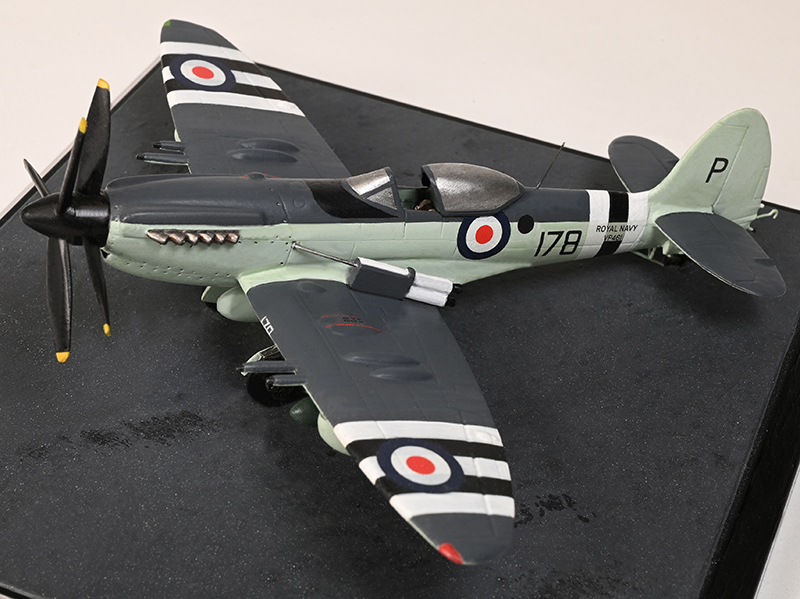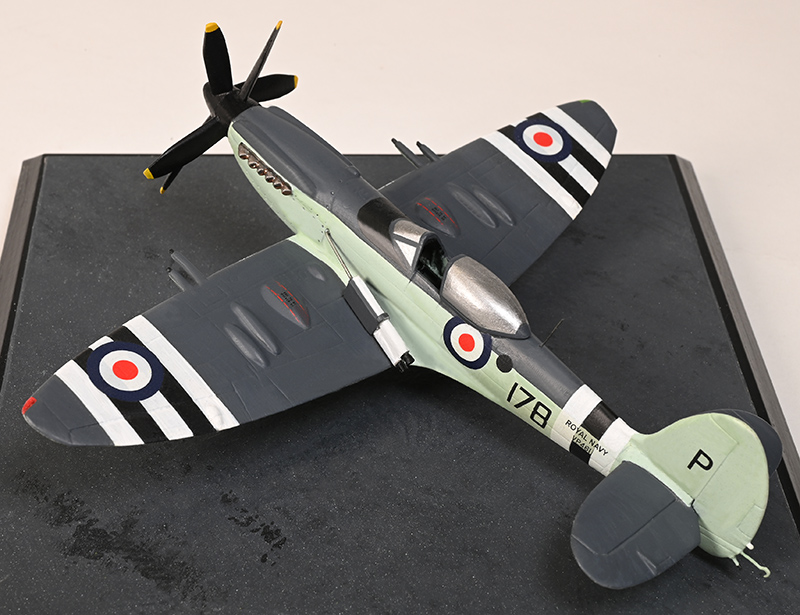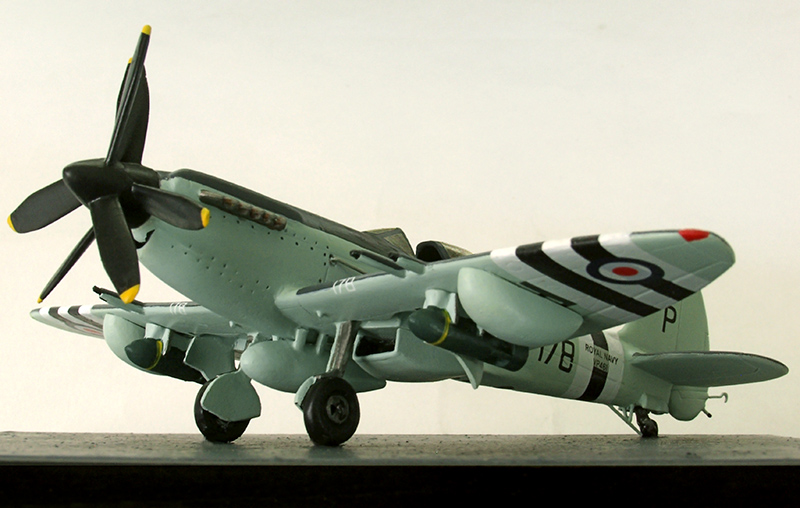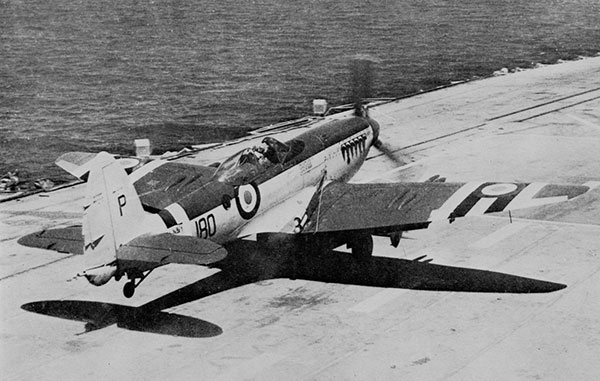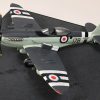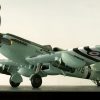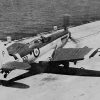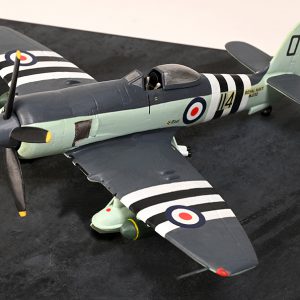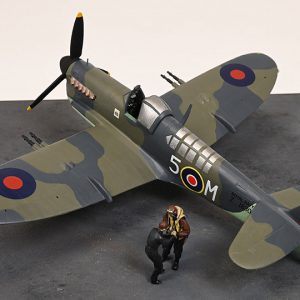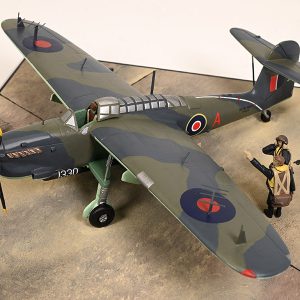Supermarine Seafire FR Mk 47 VP461 178/P 800 Naval Air Squadron
HMS Triumph off North Korea, August 1950
The Seafire FR Mk 47 was the last combat variant of the classic R J Mitchell / J Smith fighter, with very little remaining of the Supermarine Type 300 of 1936; the characteristic elliptical wing had been considerably modified and the Griffon engine with a six-bladed contra-rotating propeller had replaced the Merlin. The contrast from the Spitfire Mk I was vast, the Seafire FR Mk 47 had twice as much power, a speed increase from 355mph (571km/h) to 451mph (726km/h), an increase in weight from 5,280lb (2,400Kg) to 10,300lb (4,682Kg) and a threefold increase in firepower.
Seafire Fr Mk 47 VP461 was built at Supermarine’s South Marston works, and taken on charge by the Navy in April 1948. 800 Naval Air Squadron formed as part of the 13th Carrier Air Group on HMS Triumph in April 1949, and later that year it operated in Far Eastern waters flying strikes with Fireflies and 800’s Seafires while shore-based at Sembawang as part of the Malayan emergency. Remaining in the Far East the carrier started on a tour to Australia and Japan in April 1950, and was en route to Hong Kong when the Korean War broke out. Triumph returned to Japan to join the United States Navy Seventh Fleet at Okinawa, and 800’s Seafires carried out their first strike, on Haeju airfield, on 3 July. The squadron continued carrying out combat air patrols over the fleet, ground strikes with rockets and bombs – as shown on the model – until relieved by HMS Ocean at the end of September. RATOG (Rocket Assisted Take Off Gear) was fitted to get the Seafire airbourne. The black and white markings, reminiscent of the “D-Day stripes”, were added after one of 800’s Seafires had been fired on by a USAF B-29 at the end of July, the aircraft looking too much like the North Korean Yak-9, and similar markings were to be worn by Royal Naval aircraft for the remainder of the Korean conflict. On the return to the UK, the Seafires were given up; 800 had been the last Seafire squadron, and were to re-equip with its descendant the Supermarine Attacker.


